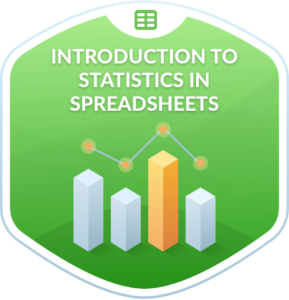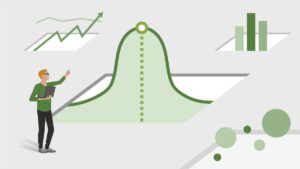Best Business Statistics Courses - Q1 2023
Time to Complete:
# Enrolled:
Content Coverage:

Lecturer Quality:

Quiz Quality:

Exercise Quality:

Our Expert Review
Content Coverage
asdfasd
Lecture Quality
asdfasdf
Quiz Quality
asdfasdf
Assignment/Exercise Quality
asdfasdf
Certificate Brand Quality
Time to Complete:
# Enrolled:
Content Coverage:

Lecturer Quality:

Quiz Quality:

Exercise Quality:

Our Expert Review
Content Coverage
asdfasd
Lecture Quality
asdfasdf
Quiz Quality
asdfasdf
Assignment/Exercise Quality
asdfasdf
Certificate Brand Quality
Time to Complete:
# Enrolled:
Content Coverage:

Lecturer Quality:

Quiz Quality:

Exercise Quality:

Our Expert Review
Content Coverage
asdfasd
Lecture Quality
asdfasdf
Quiz Quality
asdfasdf
Assignment/Exercise Quality
asdfasdf
Certificate Brand Quality
Time to Complete:
# Enrolled:
Content Coverage:

Lecturer Quality:

Quiz Quality:

Exercise Quality:

Our Expert Review
Content Coverage
asdfasd
Lecture Quality
asdfasdf
Quiz Quality
asdfasdf
Assignment/Exercise Quality
asdfasdf
Certificate Brand Quality
Time to Complete:
# Enrolled:
Content Coverage:

Lecturer Quality:

Quiz Quality:

Exercise Quality:

Our Expert Review
Content Coverage
asdfasd
Lecture Quality
asdfasdf
Quiz Quality
asdfasdf
Assignment/Exercise Quality
asdfasdf
Certificate Brand Quality
Time to Complete:
# Enrolled:
Content Coverage:

Lecturer Quality:

Quiz Quality:

Exercise Quality:

Our Expert Review
Content Coverage
asdfasd
Lecture Quality
asdfasdf
Quiz Quality
asdfasdf
Assignment/Exercise Quality
asdfasdf
Certificate Brand Quality
Time to Complete:
# Enrolled:
Content Coverage:

Lecturer Quality:

Quiz Quality:

Exercise Quality:

Our Expert Review
Content Coverage
asdfasd
Lecture Quality
asdfasdf
Quiz Quality
asdfasdf
Assignment/Exercise Quality
asdfasdf
Certificate Brand Quality
Time to Complete:
# Enrolled:
Content Coverage:

Lecturer Quality:

Quiz Quality:

Exercise Quality:

Our Expert Review
Content Coverage
asdfasd
Lecture Quality
asdfasdf
Quiz Quality
asdfasdf
Assignment/Exercise Quality
asdfasdf
Certificate Brand Quality
Time to Complete:
# Enrolled:
Content Coverage:

Lecturer Quality:

Quiz Quality:

Exercise Quality:

Our Expert Review
Content Coverage
asdfasd
Lecture Quality
asdfasdf
Quiz Quality
asdfasdf
Assignment/Exercise Quality
asdfasdf
Certificate Brand Quality
Time to Complete:
# Enrolled:
Content Coverage:

Lecturer Quality:

Quiz Quality:

Exercise Quality:

Our Expert Review
Content Coverage
asdfasd
Lecture Quality
asdfasdf
Quiz Quality
asdfasdf
Assignment/Exercise Quality
asdfasdf
Certificate Brand Quality
Time to Complete:
# Enrolled:
Content Coverage:

Lecturer Quality:

Quiz Quality:

Exercise Quality:

Our Expert Review
Content Coverage
asdfasd
Lecture Quality
asdfasdf
Quiz Quality
asdfasdf
Assignment/Exercise Quality
asdfasdf
Certificate Brand Quality
Topics To Look For in a Business Statistics Course
- Understanding data
- Structured vs unstructured data
- Probability
- Linear regression
- Multiple regression
- Confidence intervals
- Statistical inference
- ANOVA
- Binomial distributions
- Sampling distributions
- Two population means
- Mean, median, and mode
- Scatterplots
- Formulating and testing hypothesis
- Computing measures of central tendency and variation
The Major Online Learning Platforms
Each online learning platform is unique. Some specialize in certain types of content, some partner with major universities or corporations to develop content, and some have special learning features. While not exhaustive, the list below includes the major online platforms whose courses we feature.
Pros / Cons
Pros: Certificates often are offered from major universities or corporations.
Cons: The quality of course content and features available varies dramatically between courses.
Cost
$$$
Pros / Cons
Pros: Courses are very similar to those offered in colleges.
Cons: The quality of content and features offered varies dramatically between learning programs.
Cost
$$$$
Pros / Cons
Pros: A focus on microlearning with consistently high-quality content. Consistent use of quizzes throughout all courses.
Cons: Pricing is skewed toward annual subscriptions, which is far more content (and cost) than most learners need within a year.
Cost
$$$
Pros / Cons
Pros: Labs offer a means of gaining practical experience in technical skills.
Cons: There are no incremental quizzes or ways to test learners on specific topics.
Cost
$$$$
Pros / Cons
Pros: Udemy tends to be one of the more affordable options for individuals looking to learn specific technical skills.
Cons: Highly inconsistent quality between courses.
Cost
$
Pros / Cons
Pros: Consistent, high-quality micro-content that focuses on practical exercises.
Cons: The catalog is somewhat limited compared to other vendors on this list.
Cost
$$$
Pros / Cons
Pros: Many free online classes are offered. Live online classroom experiences are offered for some of their courses.
Cons: Variable quality of courses, with some courses having relatively low quality.
Cost
$$$$$
Pros / Cons
Pros: Skillshare has a large library of courses related to creative skills.
Cons: Most courses are just a series of lectures with no interactivity, quizzing, or opportunities to practice concepts.
Cost
$$$
For more information, check out our detailed post on the best online course platforms.
Frequently Asked Questions about Data Analytics
How can data analytics help business?
Structuring, organizing, analyzing, and reporting data can greatly benefit businesses. Some examples include:
- Combining disparate data sources to come up with unique insights. For instance, you may have some business data in Excel and other business data in customer relationship databases and e-commerce systems.
- Data-driven decision making – Companies that analyze the right data at the right times can make decisions on facts rather than hunches or strong opinions. Data can also be an equalizer in situations where the opinions of those with strong personalities win out over more reserved personalities.
- Customer insights – These days, there is a wide range of quantitative and qualitative data that can be used to gain customer insights. These include website user data, demographic data, buying behavior data, surveys, and many other forms of data. Understanding the structure of all of these types of data and how they can be used to gain accurate insights is an important job for most businesses.
- Streamlining processes – It is often necessary to gather disparate data in a purposeful way in order to identify bottlenecks and high-cost parts of processes. Doing so can save companies millions in time and money.
Does data analytics require coding ?
Yes – in most cases, data analysts are expected to know some basic coding. This is because analyzing data often requires querying and transforming the data from multiple data sources. Understanding languages like SQL, advanced Excel functions, and Python or R can be extremely helpful for these tasks.
Does data analytics require statistics?
Are data analytics and data science same?
The major difference between data analytics and data science is the scope of analysis. Generally speaking, Data Scientists must be more skilled at statistical models and programming, as they perform sophisticated analyses of data structures. Often Data Scientists have specific domain knowledge (such as Finance or Education). Data Analysts generally perform higher-level analysis – they gather, organize and report on data within a specific scope. Data analysts are not usually as involved in making data predictions as data scientists.
You May Also Be Interested in These Resources
- What is SQL?
- How Long Does It Take To Learn SQL?
- Best SQL Courses for Beginners
- Best SQL Certifications
- Best Data Analytics Courses
- Best Data Analytics Certifications









